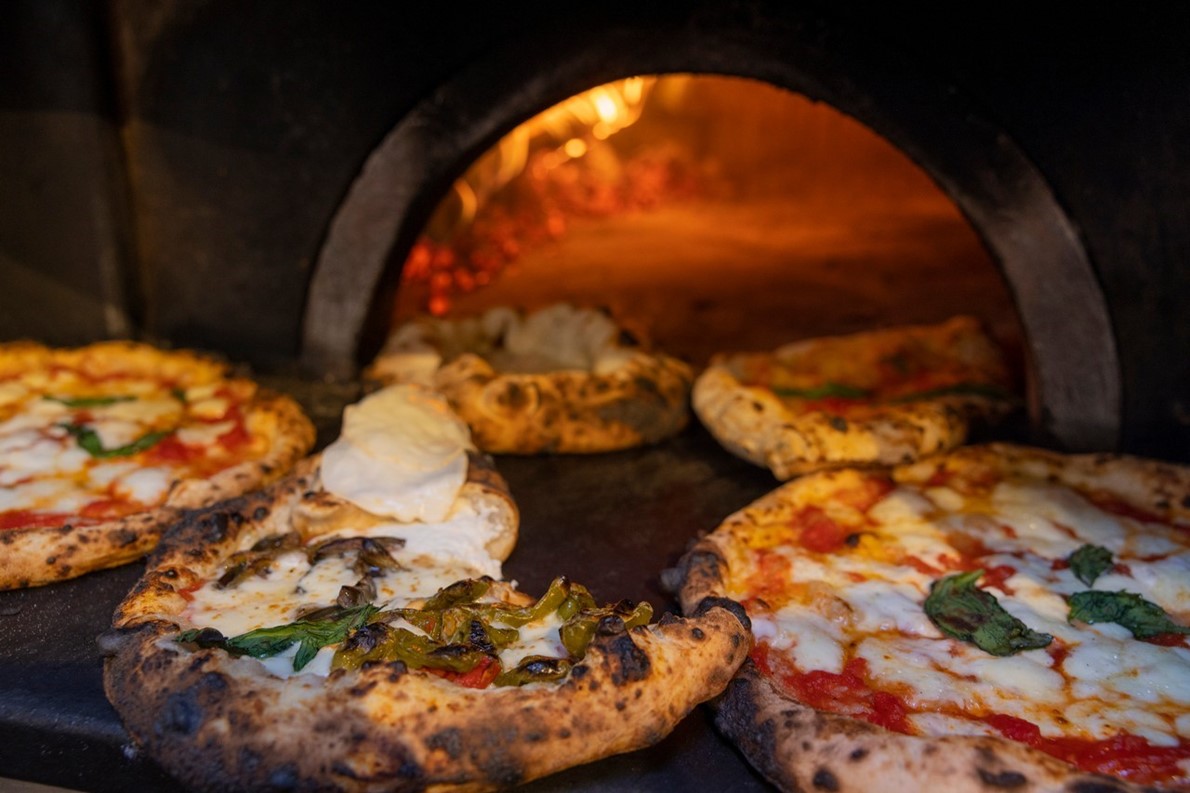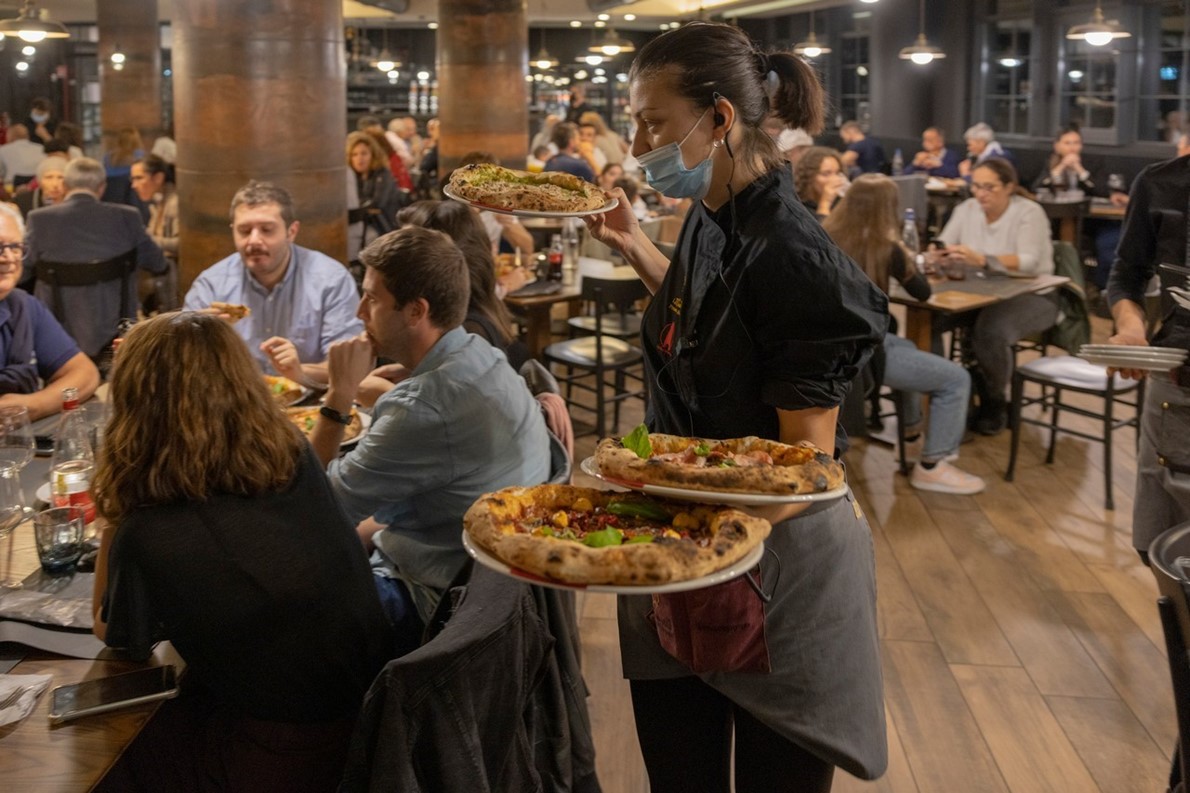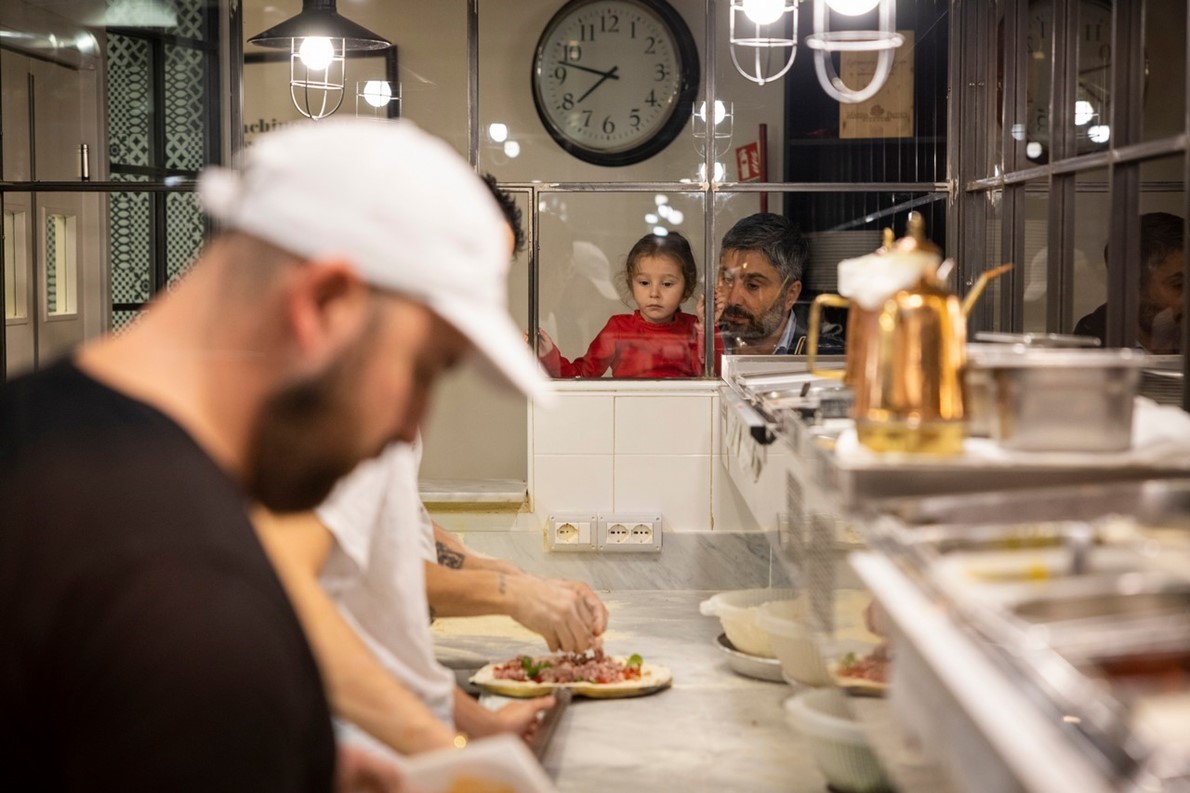It began with truffles. White ones,
from Alba, shaved over a butter-daubed wedge of dough, then ditto with a heady
black variety from Irpinia. Seated in the courtyard of the famed Naples
pizzeria Concettina ai Tre Santi, I watched my server with wide eyes as my
evening pizza marathon commenced with an intoxicating bang.
اضافة اعلان
Later he returned and layered a plate with
tomato sauce as dark as sumac and redolent of Sunday family lunches in this
southern Italian city, a handful of basil leaves, and a hand-grated snowstorm
of Parmesan cheese. After tying a gingham napkin around my neck, he topped the
composition with a deep-fried puff of dough: a classic montanara pizza turned
upside-down, the sauce on the bottom, to sustain its quintessential
crisp-outside, pillowy-inside texture.
“A margherita deserves the same respect as any other ‘Made in Italy’ artisan product.”
I was on the first stop of a pizza
pilgrimage through Campania, the Italian region where pizza was born — and
where some of today’s pizzaioli are elevating it to sterling new heights. One
of those innovators is Concettina’s Ciro Oliva, 29, who commandeered his
family’s delivery joint with dreams of grandeur when he was just 19. In recent
years, Oliva and other high-flying restaurant owners in Naples and nearby have
adopted the tasting menu, that haute-cuisine marker of five-star dining, and
applied it to the most common and commonly adored food: pizza. Over three
life-affirming days of gluttony and bliss, I toured Campania’s most hallowed
outposts offering pizza tasting menus to see how the area is ennobling its
signature fare.
 Wood-fired
pizzas ready to be served at the Concettina ai Tre Santi pizzeria in the Sanità
neighborhood of Naples, Italy, in October 2022.
In the pizza kitchen
Wood-fired
pizzas ready to be served at the Concettina ai Tre Santi pizzeria in the Sanità
neighborhood of Naples, Italy, in October 2022.
In the pizza kitchenMy journey began at Oliva’s restaurant in
the Sanità neighborhood of Naples, a rough-and-tumble district centered around
a cacophonous market street, that was named one of Time Out’s 51 coolest
neighborhoods in the world this year, an upgrade in fortune due in decent part
to the local pizzaiolo. A bombastic and high-energy Vesuvius of a man, Oliva is
usually found distributing high-fives and talking up his pizza and his
neighborhood to the stars, dignitaries, and food fans who flock to his outpost
in this gritty yet evermore vibrant part of Naples.
“A margherita deserves the same respect as
any other ‘Made in Italy’ artisan product,” Oliva told me by the kitchen’s
glowing wood-fired oven. “It’s like a Loro Piana jacket. But it’s pizza.”
For a Loro Piana-level experience, Oliva
has introduced long-leavened doughs and ingredients “all at level 10” he said,
snapping his fingers for emphasis.
“You have people who order a tasting menu
and Champagne,” he said, pointing to a table with a rarefied bottle of Jacques
Selosse Extra-Brut, “and people who order a margherita and a Coca-Cola,” which
was the case with nearly all of the present guests.
Universally, the pizzerias I visited
offered this high-low balance: excess and accessibility.
“Pizza has always been considered fast food,” said Pepe. “But this is slow-food pizza.”
The next day, I peeked in at Concettina’s
morning preparations. A group of pizzaioli with Popeye forearms vigorously
kneaded bubbles of dough, plopping them on wooden trays. A cook hand-squashed
San Marzano tomatoes into sauce in a steel pail. On the stove, clams, escarole
with black olives, and friarielli greens spiced with pepperoncino sizzled in
their pans. The day’s cheeses arrived: fior di latte, smoked provolone, buffalo
ricotta, and buffalo mozzarella made that morning that was still warm, and
exploded with juice when I bit into a slice. Pizza as an art form begins here.
Pepe in GraniAfter a visit to the nearby Ipogeo dei
Cristallini, an ancient Greek necropolis discovered in a Sanità basement and
newly opened to the public, I headed to Caiazzo, a tiny hilltop town of 5,000
to Naples’s north, accessible by riding the autonomous EAV railway company,
which operates a single-car train that looks like a tin toy.
 Members
of the pizza-making team in the kitchen at Concettina ai Tre Santi in Naples,
Italy, in October 2022.
Members
of the pizza-making team in the kitchen at Concettina ai Tre Santi in Naples,
Italy, in October 2022.
“I’ve brought the whole world to Caiazzo
with pizza,” Franco Pepe proudly announced on my arrival at his celebrated Pepe
in Grani pizzeria, the subject of a recent episode of Netflix’s “Chef’s Table:
Pizza”. He took an informal survey of the diners around him. Holland. Norway.
Malaysia. India. Abu Dhabi. Italy, all parts. Guests were decked out for the
occasion, and addressed him with the Italian honorific “Maestro” as they
snapped photos, smiling with the pizza star in chef’s whites.
“Pizza has always been considered fast
food,” said Pepe. “But this is slow-food pizza.” Superb raw materials,
high-craft cuisine, reconsidered recipes. The once-teenage assistant to his
pizzaiolo father, Pepe took over the pizzeria with his brothers upon his
father’s death, but he split from his siblings in 2012, rebuilding an
18th-century Caiazzo ruin as his own restaurant, with his apartment installed
directly above it, where he could cultivate his exacting ideology of pizza. “We
knew all about dough,” he said. “But we had a lot to learn about ingredients
and recipes.”
An official ambassador of the Mediterranean
diet, Pepe stressed the nutrition of his menu, but health food in an Italian
context is a generous category. The first pizza I was served was deep-fried and
a blaze of flavors: a gently cured anchovy of nearly raw intensity, a
sunshine-sweet tomato slice, a shimmering note of citrus zest underlined by
peperoncino’s slight fire.
 The bustling dining room of I Masanielli in
Caserta, Italy, in October 2022.
The bustling dining room of I Masanielli in
Caserta, Italy, in October 2022.
It was the triumphal embodiment of Pepe’s
doctrine: “Pizza enhanced by the culinary arts,” as he described it, while the
young staff stretched fresh pies on the marble countertop in the kitchen.
“Where tradition meets creativity and innovation.”
I MasanielliThe next morning being Sunday, none of
EAV’s toy trains were running, but a substitute shuttle ran from Caiazzo’s
piazza to nearby Caserta, the heart of buffalo mozzarella production. Buffalo
mozzarella is the fattier, more lyrical sibling of cows’-milk fior di latte,
which is incorrectly labeled “mozzarella” in America, since domesticating and
milking buffaloes has proved so difficult stateside.
Along the main drag, occupying a former car
dealership and flanked by a gas station and a discount children’s wear shop,
the I Masanielli pizzeria doesn’t look like much from the outside. But the
pizza Francesco Martucci prepares here is another majestic anomaly of Caserta —
the most gastronomically radical concoctions of my pizza pilgrimage.
“We want to take pizza to another planet.”
“At first, I was viewed as a heretic for my
techniques, for my toppings and for my approach to pizza,” Martucci told me.
“But I knew that using extreme quality and creativity, I could establish
something all my own.”
I Masanielli is a name-check of a
17th-century Neapolitan revolutionary. “I’m a bit rock ’n’ roll,” Martucci
said, setting his tattooed fists on the restaurant table. “Can’t you tell?”
Translation: He revels in the iconoclasm of
his pizzas, which reference trailblazing Michelin restaurants rather than
classic pizzaiolo preparations. Among his influences are the acclaimed Danish
chef René Redzepi — “Noma is the watershed between the old and the new” — and
Massimo Bottura, Italy’s three-Michelin-star headliner.
 Pizza-makers
at work at I Masanielli in Caserta, Italy, in October 2022.
Pizza-makers
at work at I Masanielli in Caserta, Italy, in October 2022.
By 8pm that evening, I’d consumed only a
plate of cooked vegetables at the Reggia di Caserta’s cafe, and walked 16km
according to my phone, yet hunger eluded me after two nights of overdoing pizza
as if it were a hazing rite for a fraternity. Still, my appetite revived after
Martucci presented the first slice of the tasting menu — with three kinds of
bitter, he explained: fermented sea urchin, fermented chicory, and beer-infused
ricotta.
The sensations were otherworldly,
adventurous, a full ride of earthy and marine flavors unlike anything I had
ever experienced on a pizza. That was followed by a slice with a
vegetable-reduction paste, fior di latte, and jammy prunes on a diaphanous
dough cloud with wood-fired singes on its cumulus curves. There was a pizza
with zucchini, zucchini flowers, and Kombu seaweed blanketed by the whispery
smoke of provolone, and a slice with silky Jerusalem artichokes cooked three
ways atop honey-dried pecorino.
“We want to take pizza to another planet,”
Martucci said, his blue eyes dancing as he set down my last slice: a marinara
with anchovies over oven-roasted puréed tomatoes and wild-garlic pesto,
etherealized with his signature triple-cooked crust — a featherlight gauze of
dough that was steam-baked, deep-fried and then oven-crisped.
“Michelin doesn’t even see what we’re
doing,” he said. The renegade pizzaiolo wore a flour-dusted black T-shirt and a
roguish smile. “But there’s a new path that’s opened up here, and it’s the
future of pizza.”
Read more Good Food
Jordan News



